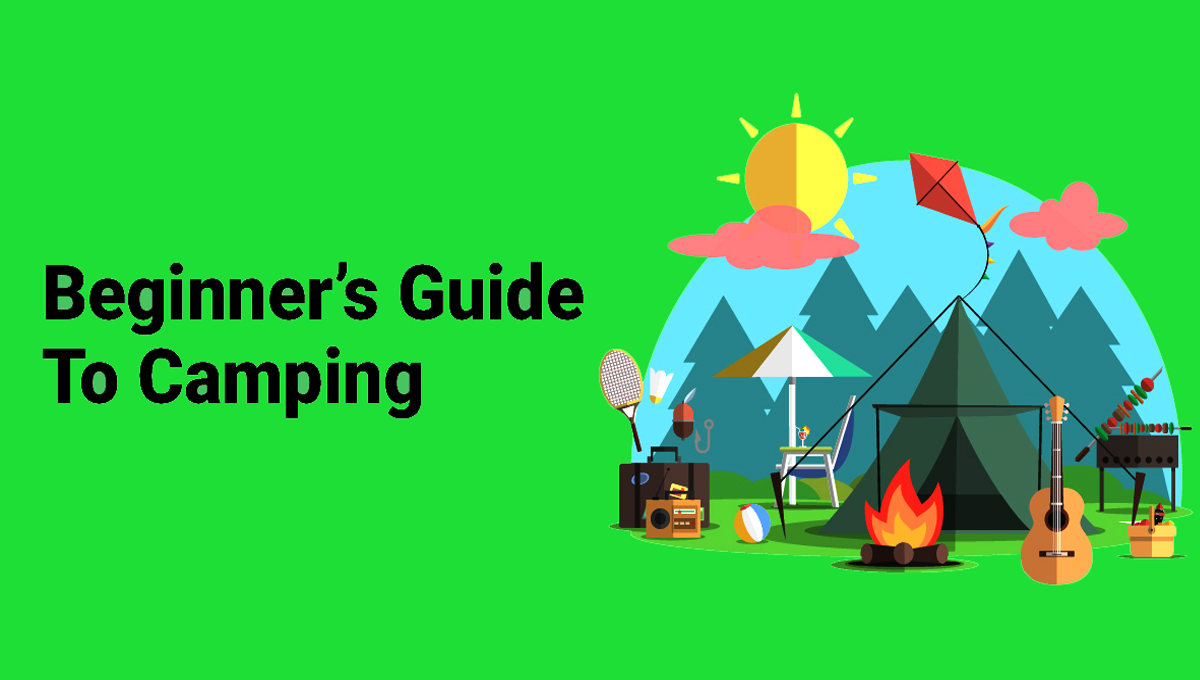WHAT IS CAMPING ?
Camping is an outdoor activity involving overnight stays away from home in a shelter, such as a tent or a recreational vehicle. It typically takes place in natural settings, such as parks, forests, or wilderness areas, and can involve activities such as hiking, fishing, and swimming. Some people camp in order to experience the natural world and disconnect from technology, while others enjoy camping as a way to spend time with friends and family or as a way to explore new places.
There are several different types of camping, including:
- Tent camping: This is the most traditional form of camping, where individuals or groups pitch a tent and sleep on the ground.
- RV camping: This type of camping involves renting or owning a recreational vehicle (RV), which typically includes amenities such as a kitchen and bathroom.
- Backpacking: This type of camping involves carrying all of your gear in a backpack and hiking into a more remote location to set up camp.
- Car camping: This type of camping involves camping in a designated camping area with a car or other vehicle nearby.
- Glamping: This type of camping combines camping with more luxurious amenities and comforts, such as air conditioning, furniture, and private bathrooms.
- Wild camping: This type of camping is done in wilderness areas or rural regions where you would need to hike or paddle to the camping spot with minimal gear and facilities.
- Beach camping: This type of camping is done on a beach, and can include amenities such as picnic tables and fire rings.
- Winter camping: This type of camping is done during winter months and requires specialized gear and clothing to stay warm.
- Bike camping: This type of camping is done by bike riders, carrying minimal gear, and camping in designated areas or wild camping along the way.
WHAT IS SEASONAL CAMPING ?
Seasonal camping refers to a type of camping where individuals or families rent a campsite for an entire camping season, usually from spring to fall. This allows them to have a consistent camping spot for the duration of the season, and can be a more cost-effective option for frequent campers.
Seasonal campers typically set up a more permanent campsite, with amenities such as electricity and water hookups, and may also bring additional furniture or decorations to personalize their space.
FOREST CAMPING
Forest camping refers to camping in a forested area, typically within a designated camping area or campsite. This type of camping can offer a wide range of recreational opportunities and natural beauty, as well as a chance to disconnect from the hustle and bustle of everyday life. Some popular activities while forest camping include hiking, fishing, and swimming.
When camping in a forest, it’s important to be aware of and follow the regulations set by the land management agency, such as obtaining the necessary permits, respecting fire restrictions and rules, and following Leave No Trace principles to minimize impact on the environment.
Some Forest Service campgrounds have amenities such as pit toilets, fire rings, and picnic tables. Some also offer potable water, electric and sewer hookups for RVs, and showers.
Backpacking is also a form of forest camping where you carry all of your gear in a backpack and hike into a more remote location, and you can set up a tent and camp in a specific spot. National Forests and wilderness areas offer a variety of backpacking options, some of which require a permit.
DESSERT CAMPING
Desert camping refers to camping in a desert or arid environment, such as the Mojave, Sonoran, or Chihuahuan deserts. Desert camping can offer a unique and rugged experience, with stunning landscapes and the opportunity to see a wide range of desert wildlife.
When camping in the desert, it’s important to be prepared for the hot and dry conditions by bringing plenty of water, sunscreen, and protective clothing. It’s also important to be aware of the risks of dehydration, heat stroke, and sunburn, and to take necessary precautions. Additionally, it’s important to be aware of the risks of flash floods, and to take care to camp on high ground or in designated campsites.
Desert camping can also offer unique experiences such as star-gazing, as the clear sky and minimal light pollution can offer stunning views of the night sky.
In terms of amenities, Desert camping can vary greatly, some may have developed campgrounds with amenities such as toilets, picnic tables and fire rings, while other may be primitive and dispersed camping.
SEA CAMPING
Sea camping refers to camping near the coast, either on a beach or on an island. This type of camping can offer a unique experience, with the opportunity to enjoy the ocean, swim, fish, and explore the coastal environment.
When camping near the coast, it’s important to be aware of the risks of high tides, strong currents, and hazardous weather conditions. It’s also important to be aware of the regulations set by the land management agency, such as obtaining the necessary permits, respecting fire restrictions and rules, and following Leave No Trace principles to minimize impact on the environment.
Beach camping can offer amenities such as picnic tables, fire rings, and showers, but availability of these amenities can vary depending on the location and the specific campsite.
Island camping can be a bit more primitive, and getting to the island may require a boat or ferry. Once on the island, campers will need to bring everything they need as there will be no facilities, and it’s important to be aware of the tide schedule and to set up camp in a high ground.
MOUNTAIN CAMPING
Mountain camping refers to camping in the mountains, typically within a designated camping area or campsite. This type of camping can offer a wide range of recreational opportunities, such as hiking, climbing, and fishing, as well as the chance to enjoy the natural beauty of the mountain environment.
When camping in the mountains, it’s important to be prepared for the variable weather conditions, altitude changes, and rugged terrain. You should bring appropriate clothing, footwear, and gear, such as a warm jacket, rain gear, a good quality tent, a reliable camping stove and a map and compass. It’s also important to be aware of the risks of altitude sickness, dehydration and hypothermia, and to take necessary precautions. Additionally, it’s important to be aware of the risks of wildlife and to take care to store food and trash properly, and to be aware of the regulations set by the land management agency, such as obtaining the necessary permits and respecting fire restrictions and rules.
Mountain camping can offer amenities such as pit toilets, fire rings, and picnic tables, but availability of these amenities can vary depending on the location and the specific campsite. Some campgrounds offer potable water and electric hookups for RVs. National Parks and Forest Service campgrounds offer a variety of camping options, and some require a permit.
Backpacking is also a form of mountain camping where you carry all of your gear in a backpack and hike into a more remote location, and you can set up a tent and camp in a specific spot. National Parks and wilderness areas offer a variety of backpacking options, some of which require a permit.
SNOW CAMPING
Snow camping refers to camping in snowy or winter conditions, typically in a designated camping area or campsite. It requires special gear, equipment and knowledge, as well as the ability to handle harsh weather conditions. This type of camping can offer a unique experience, with the opportunity to enjoy winter activities such as skiing, snowshoeing, and snowmobiling.
When camping in the snow, it’s important to be prepared for the cold temperatures, snow, and wind. You should bring appropriate clothing, such as a warm jacket, insulated pants, a hat, gloves and a good quality sleeping bag rated for the expected temperatures. Special gear such as insulated sleeping pad, snowshoes, ski or snowmobile, and a four-season tent are also necessary. It’s also important to be aware of the risks of hypothermia and frostbite, and to take necessary precautions. Additionally, it’s important to be aware of the risks of avalanches and to take care to camp in safe areas or to have the necessary knowledge and gear to assess the snow pack.
Snow camping can vary greatly, some may have developed campgrounds with amenities such as toilets, picnic tables and fire rings, while other may be primitive and dispersed camping. Some areas may require a permit.
Snow camping is not for everyone, it requires a certain level of experience and comfort in the wilderness, so it’s important to be aware of your own limitations and to be properly prepared before undertaking this type of camping.
Hunting camping refers to camping in the wilderness or rural areas for the purpose of hunting. It can involve staying in a designated hunting camp or setting up a temporary base camp in a remote location.
When hunting camping, it’s important to be aware of and follow the regulations set by the land management agency, such as obtaining the necessary hunting permits and staying within designated hunting areas. It’s also important to be familiar with the area, the hunting laws, and the hunting seasons. It’s important to be aware of the risks of wild animals and take necessary precautions.
Hunting camping typically involves carrying gear and equipment such as hunting weapons, hunting clothes, camping gear and food. A hunting camp may include basic amenities such as a shelter, fire ring, and possibly a cooking area. Many hunting camps are primitive and may not have access to potable water, electricity or other services.
FAMILY CAMPING
A family camp is a vacation or retreat option for families to spend time together in a recreational setting, such as a campground, cabin, or RV park. Activities may include hiking, swimming, boating, fishing, and campfires. Many family camps also offer organized activities and programs, such as arts and crafts, sports, and educational sessions. Some family camps are religious or theme-based, while others are open to families of all backgrounds. The goal of a family camp is to provide a fun and relaxing environment for families to bond and make memories together.
FAMILY CAMP SHOWTIME
A family camping showtime could refer to a number of different things depending on the context, such as a performance or presentation that is put on for families who are camping. Examples could include a magic show, music concert, or educational program.
It could also refer to a designated time when families can gather around a campfire or other designated area to socialize and enjoy each other’s company. It could also refer to a schedule of activities provided for families during their camping trip like storytelling, games, and other forms of entertainment



